You’ve used hashtags on social media platforms like Twitter, Instagram, LinkedIn and Facebook. But have you considered using hashtags on YouTube?
Fair warning: YouTube SEO is a beast. You have to find the best keywords, optimize all parts of your video around that keyword and link to your other videos—and you also have to find the winning hashtags for each video.
In this comprehensive guide, we’ll explain what YouTube hashtags are, why they’re important and how to properly use them to increase video views.
Ready to get started?
What are YouTube hashtags?
YouTube hashtags are words or phrases that help users find videos based on subject matter or category. Users can click on hashtags to see all YouTube videos that have the same hashtag.
Why use YouTube hashtags?
YouTube hashtags are similar to hashtags on Facebook, Twitter and Instagram—with a few added benefits.
Hashtags help YouTube understand what your video is about
When you use relevant keywords as video hashtags, you’re giving YouTube more information about your video, which can help your video appear in search results.
Hashtags help more users find your content
If you’re using relevant YouTube hashtags and your video is appearing in search results, your video view counts will likely increase—and hopefully, your subscriber count will follow.
Hashtags help you categorize your videos
Many brands organize their videos into playlists. Hashtags can help categorize your videos by topic or theme.
How to find the best YouTube hashtags for your videos
You don’t want to use hashtags that spammy or irrelevant videos are using. Always do a quick search to see what pops up when you’re considering a hashtag to ensure that the content that appears relates to your own video.
Here are some ways to find the best hashtags for your videos:
1. Check relevant trending videos
Search for the main theme of your video. For example, we searched for “Internet of Things” to see what hashtags the top-ranked video was using. While you wouldn’t want to use the branded hashtag, you would want to use the two other hashtags (this video has nearly 2 million views!).
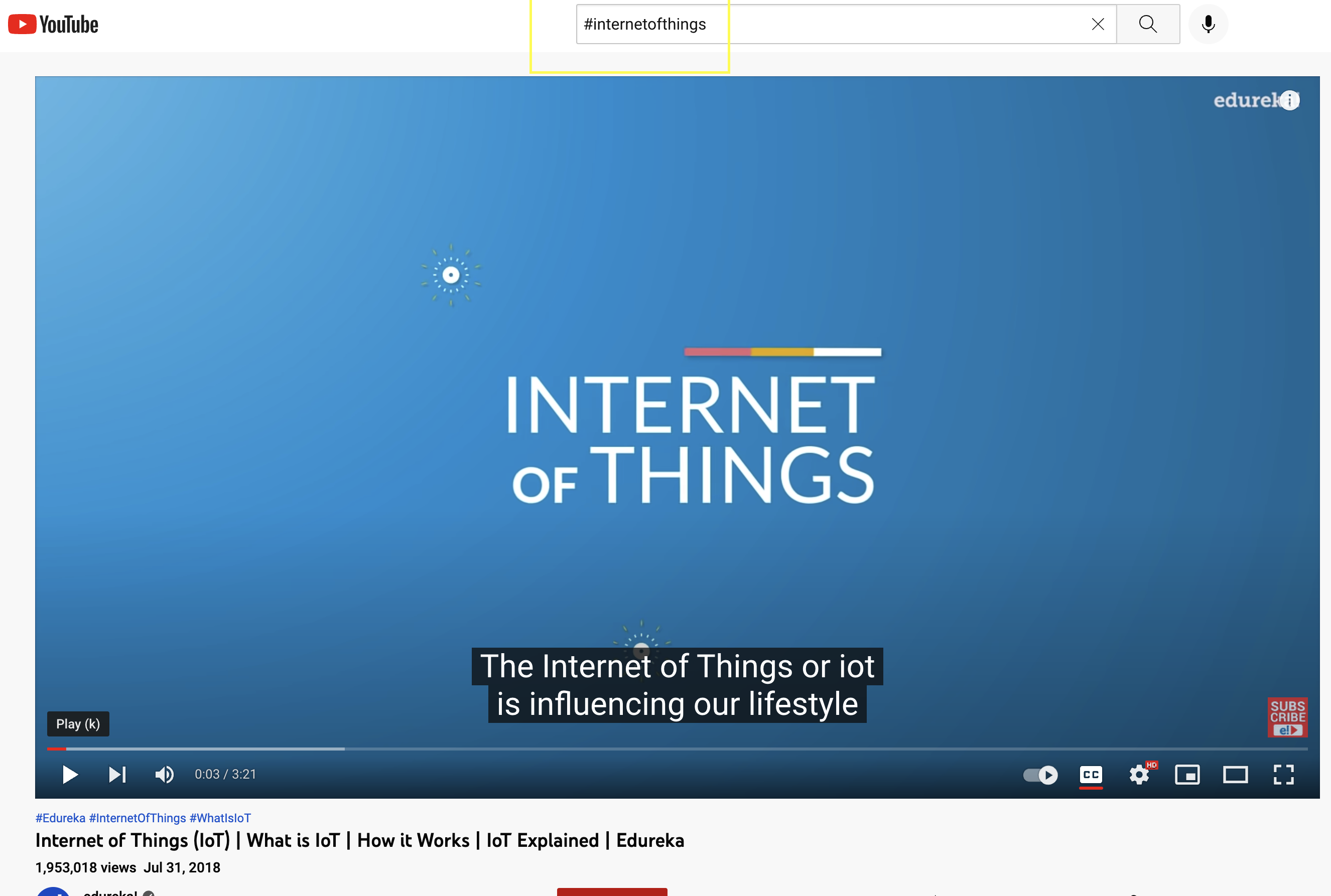
2. Research top-performing competitor videos
Take a look at the hashtags your top competitors are using, along with the number of views per video. Click through to related videos to search for yet additional hashtags.
3. Check YouTube autosuggest
Just as the Google search bar attempts to anticipate what you’re searching for, YouTube will show you hashtag suggestions once you type the hashtag symbol.
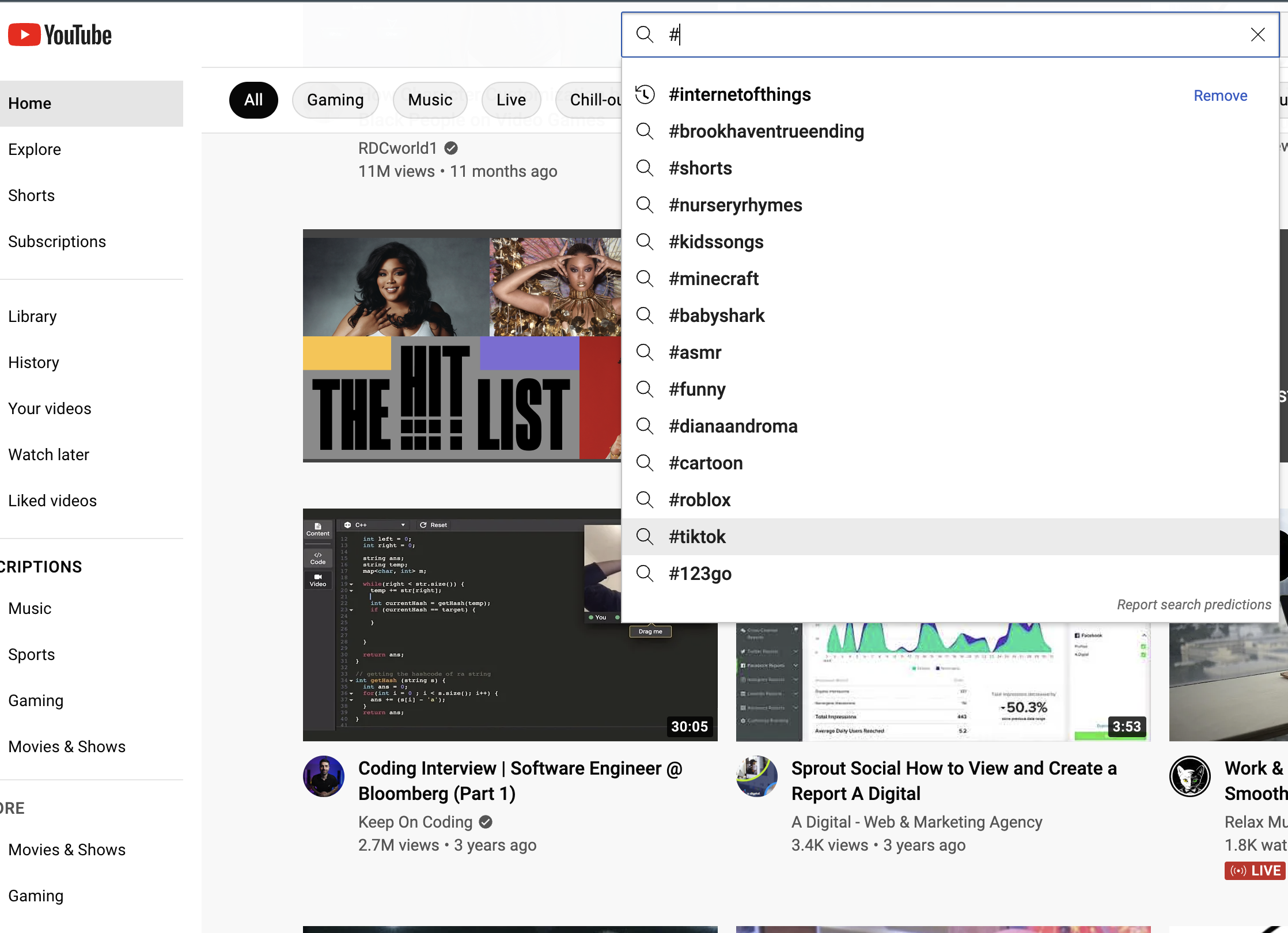
If the top hashtags aren’t relevant for your video, add a word or phrase that will produce more relevant results.
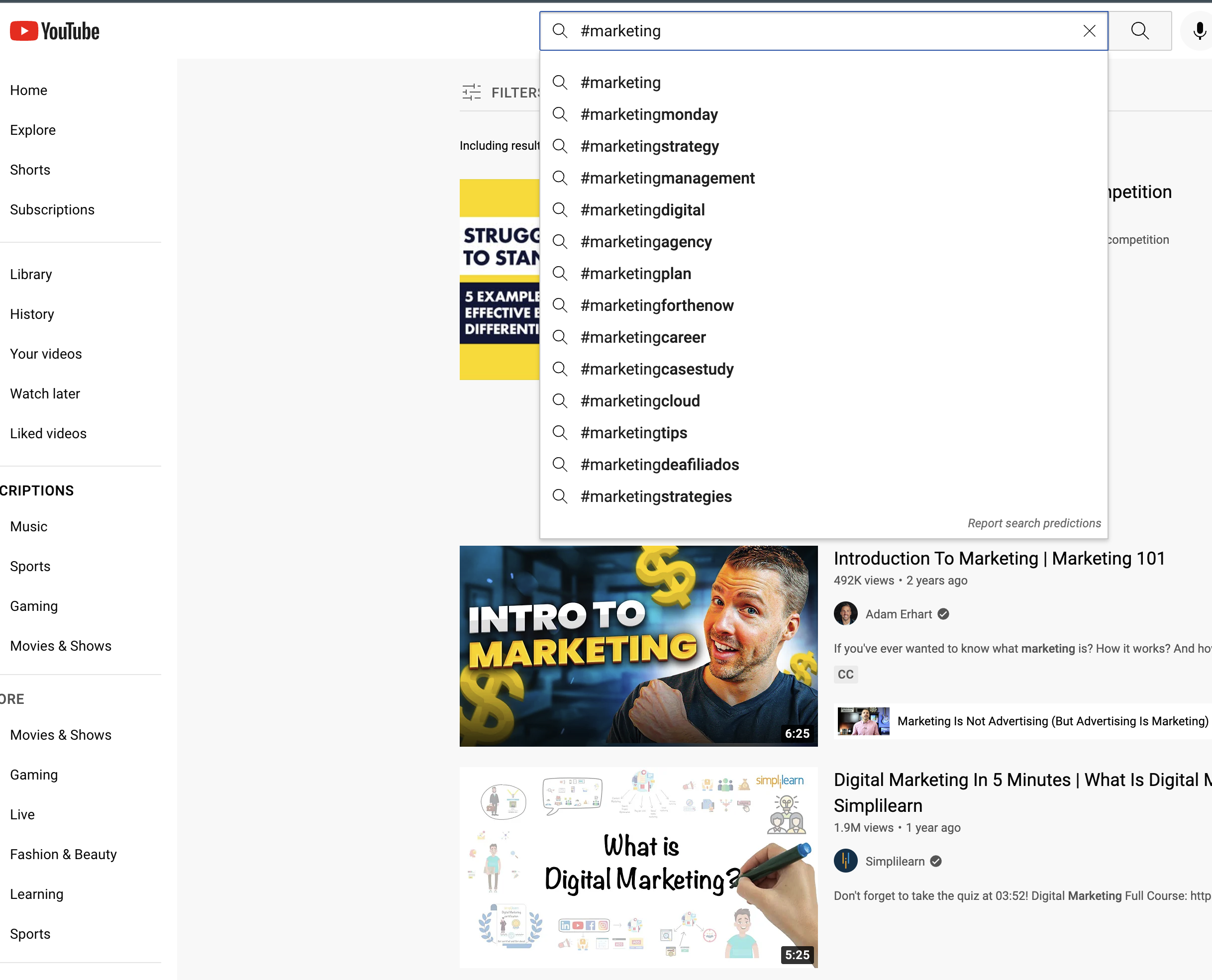
4. Try a YouTube hashtag generator
Need to find hashtags in a hurry? Try Ahrefs, Aux Mode or Kparser — all of these platforms can generate loads of hashtags instantly, based on the term you input. And Sprout Social’s YouTube Listening feature can show you trending topics and associated hashtags.
How to add hashtags to YouTube videos
There are two different areas where you can add hashtags to your YouTube videos. The first is in your video’s title, and the second is at the bottom of your video’s description.
How to add hashtags to your YouTube video title
Before you use hashtags in your video’s title, do some keyword research. A relevant title, preferably with keywords, can be just as important as hashtags in helping users find your content.
Take a look at this video from Sprout Social’s YouTube channel. All videos in the #SproutChat series start with the same hashtag in the title followed by a short, relevant search phrase or description.
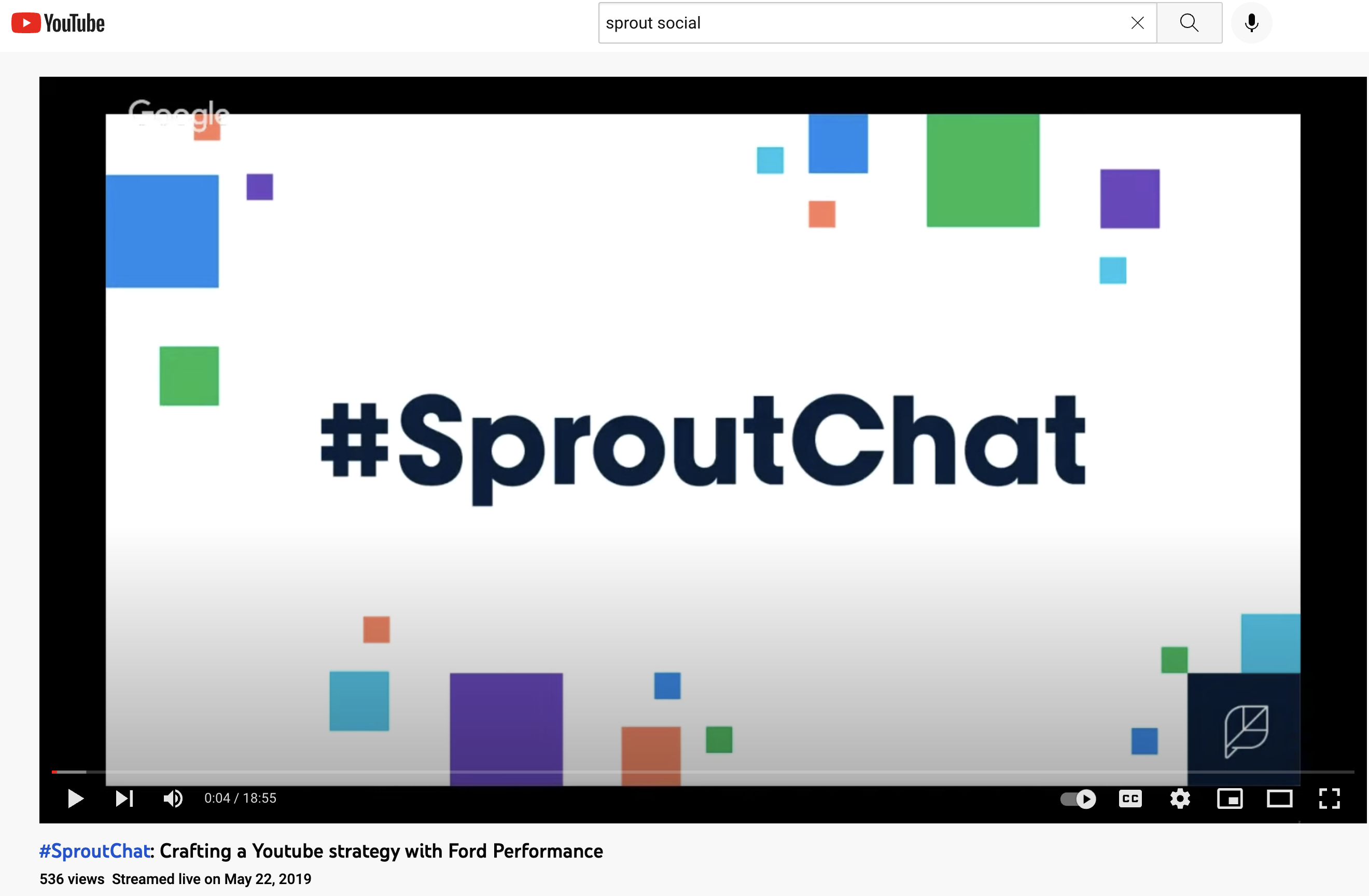
There are several #SproutChat videos on Sprout’s YouTube channel, all of which appear when users perform a search query for #SproutChat.
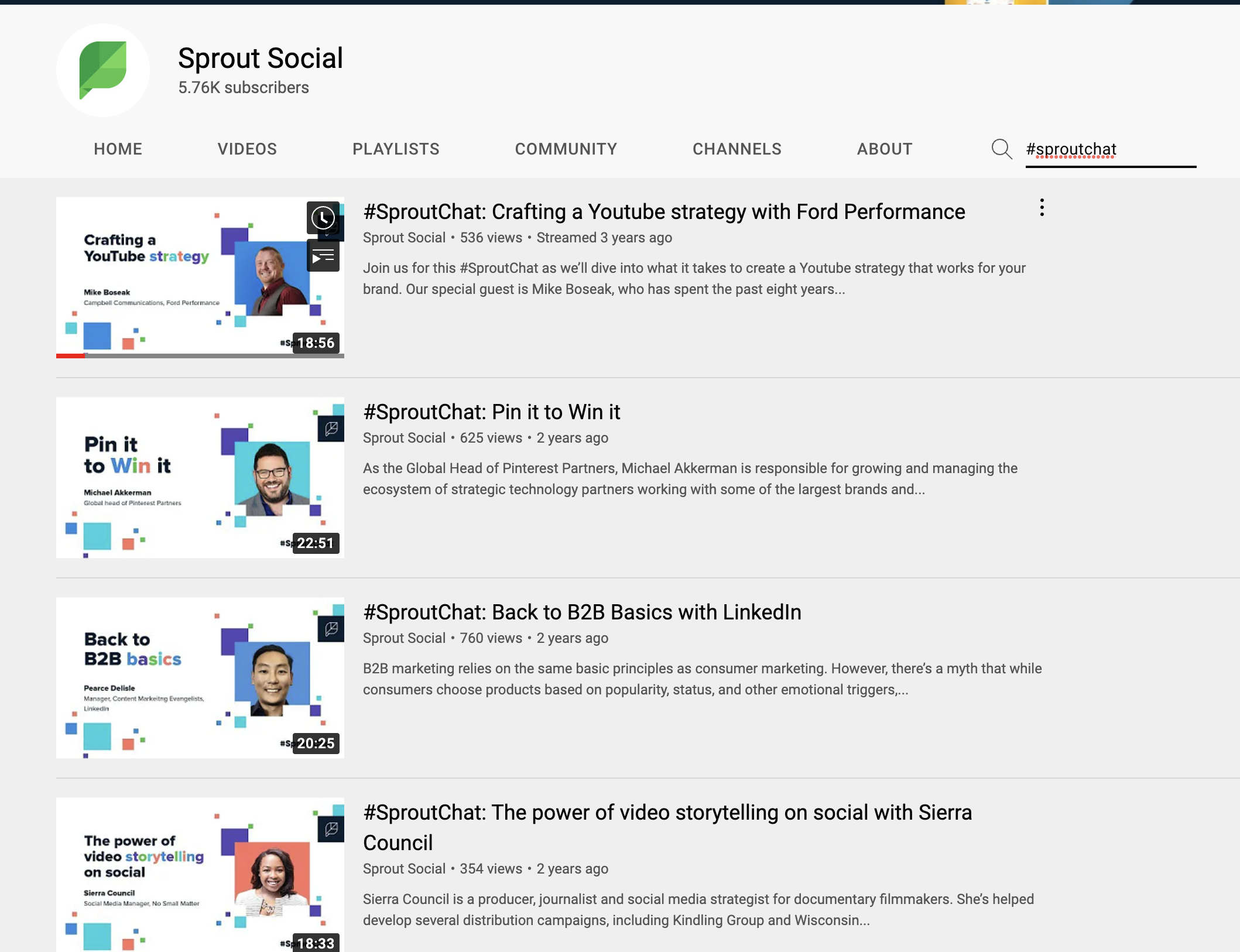
If you include the hashtag in your title, it will always be clickable from your video page. In search results, clicking on the hashtag will take users directly to your video.
How to add hashtags to your YouTube video description
The other place you can add YouTube hashtags is at the end of your video description. Once you optimize your video and include your YouTube keywords, video summary, links and sources, add a handful of hashtags to the bottom of your video’s description, as this brand did:
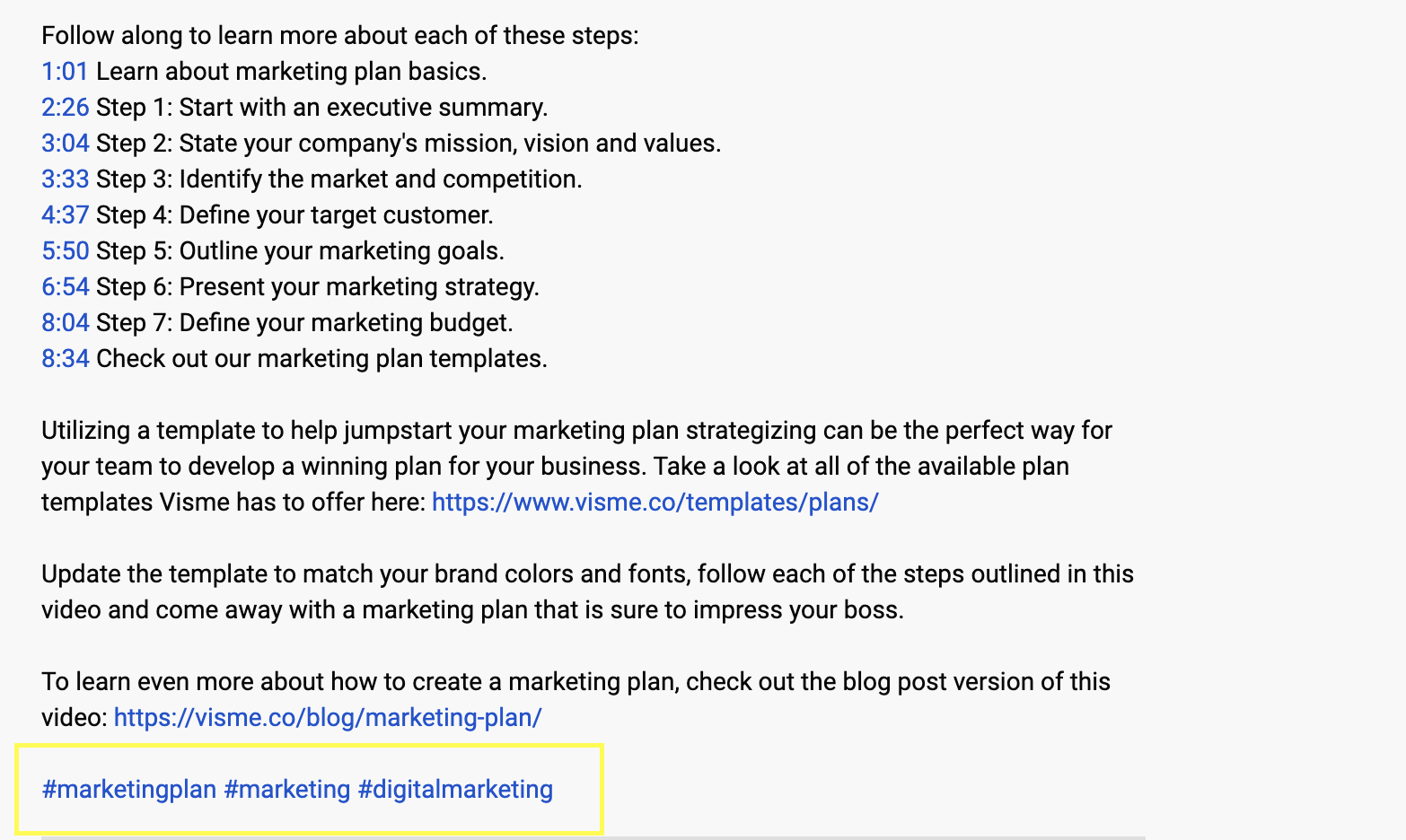
Video descriptions give you a place to add hashtags that might otherwise seem out of place in your video title. YouTube ensures that your hashtags are always visible above your video titles, so users can click them to find other videos that use those hashtags.
Take a look at what a video looks like when you add hashtags to your description—YouTube adds the first three right above your video title:
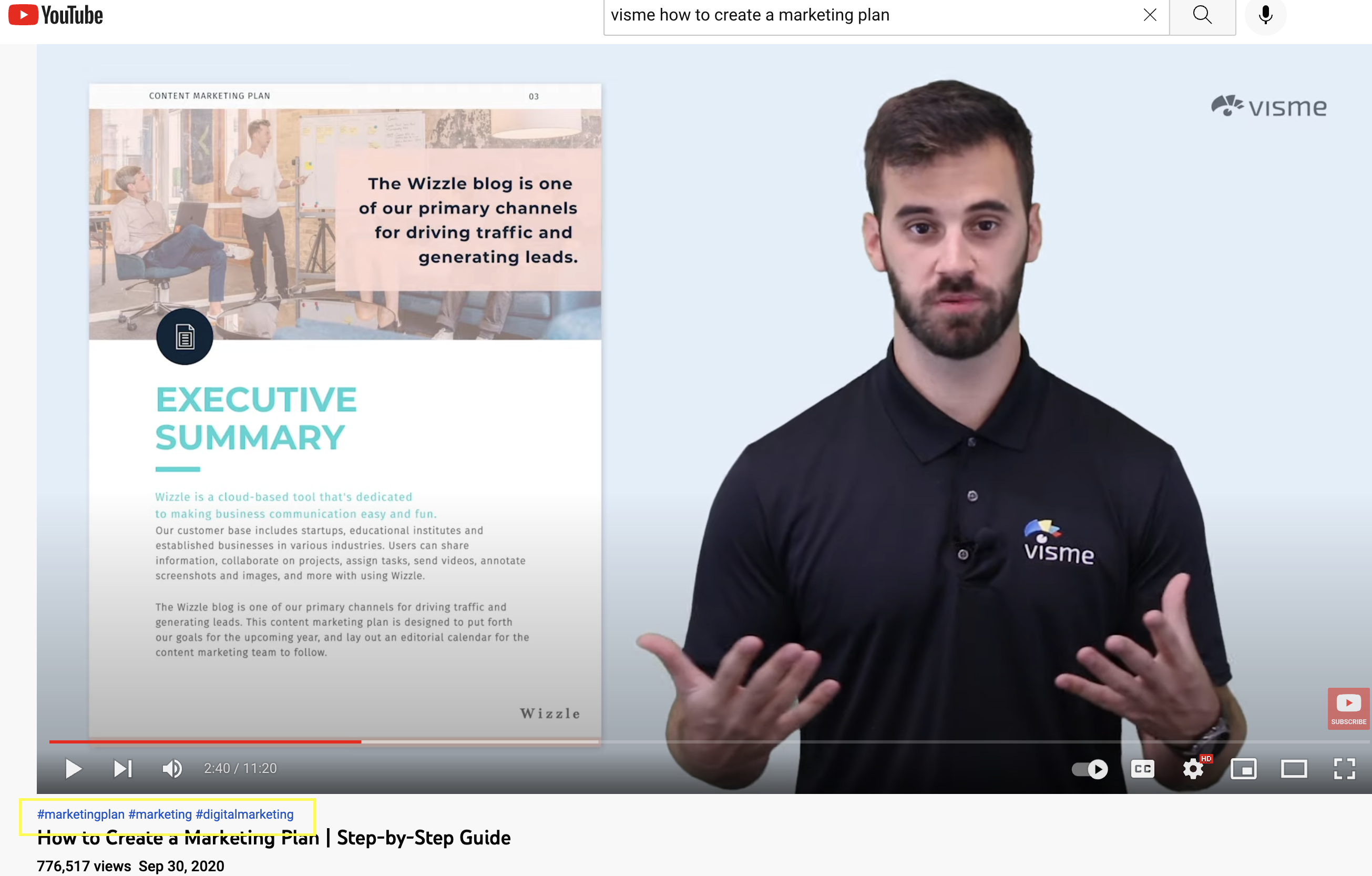
YouTube hashtags: 6 best practices
So now that you know how and where to add YouTube hashtags to your videos, it’s time to cover how to strategically implement this practice.
Follow these best practices to help you promote your YouTube channel with hashtags:
1. Use 3-5 hashtags per video
YouTube allows you to place up to 15 hashtags in your description. YouTube has stated that if you use more than 15 hashtags on your video, it’ll ignore all hashtags. So make sure you don’t overdo it.
We recommend using 1-2 hashtags in your video title (and remember that only the first three hashtags in your description will appear above your video title).
2. Create your own branded hashtags
While YouTube encourages searching through hashtags by placing them in prominent areas on your video, this can also mean that viewers will click on those hashtags and end up leaving your YouTube channel.
This is why you might want to create your own branded hashtags as we saw with #SproutChat. If a user clicks to see more videos, they’ll only see more of your own channel’s content.
3. Add location-based hashtags to local videos
If you’re trying to expand your reach in a geographic area, use location-based hashtags. Make sure your hashtags are specific. For example, the hashtag “#Springfield” could apply to a number of US cities; if you’re referring to the capital of Illinois, consider using “#SpringfieldIL.”
4. Follow YouTube hashtag policy guidelines
YouTube monitors hashtags for compliance with its hashtag policies. YouTube may remove any videos with hashtags it deems misleading or vulgar. Stick to the 15-hashtag limit and ensure your hashtags are relevant to avoid running afoul of YouTube hashtag rules.
5. Monitor video views from your hashtags
After you start using hashtags, you can view your YouTube analytics to see which hashtags are drawing users to your content.
6. Track industry and competitor hashtags
Not sure what hashtags to use? Take a look at what your competitors are doing. At Sprout, we call that social listening, and it’s a great way to spot trending hashtags, learn what content appeals to your target audience and see other valuable metrics.
Here’s a look at what social media listening can show you when using Sprout’s dashboard:
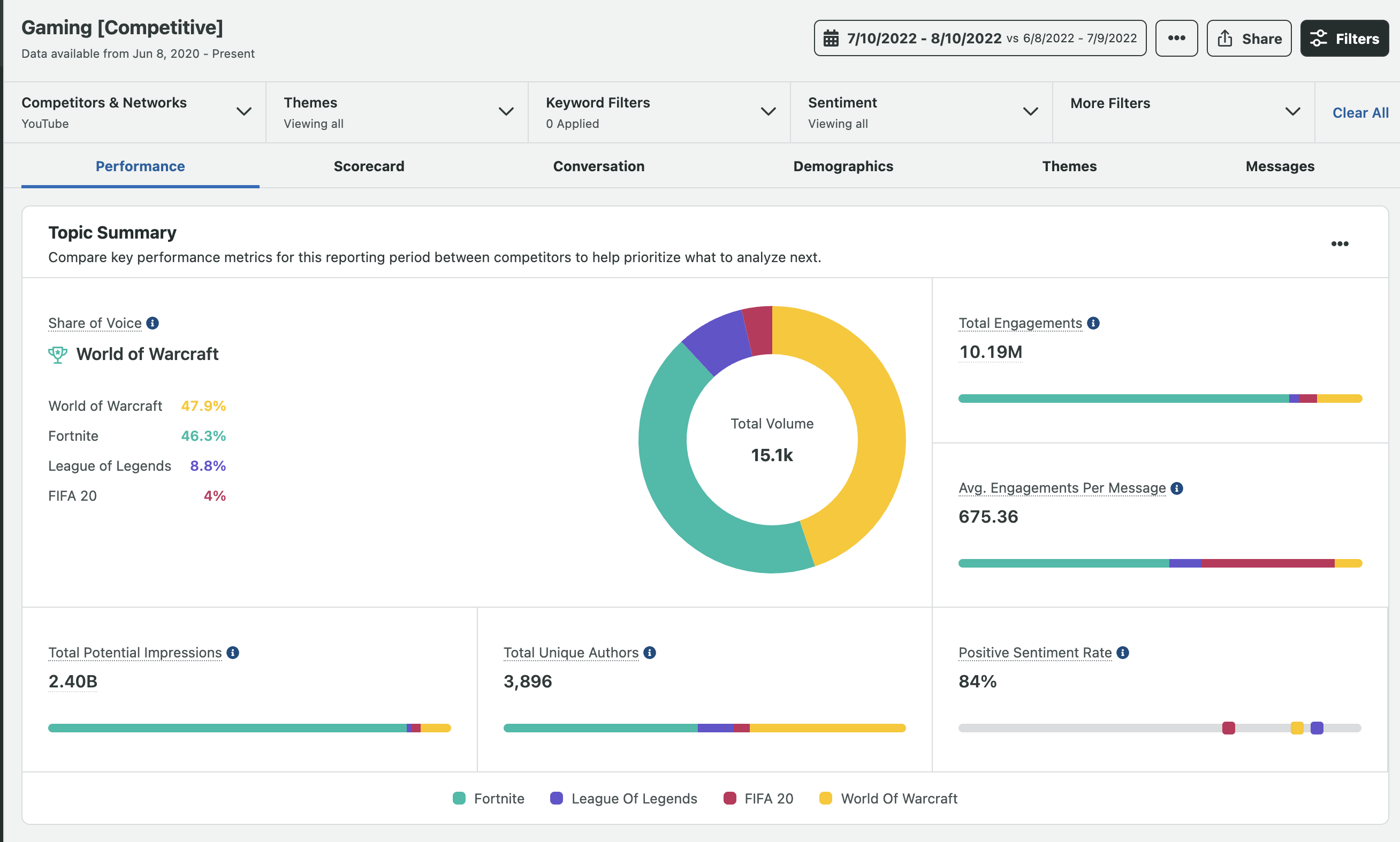
Start including hashtags in your YouTube strategy
Excited to start including hashtags in your YouTube strategy? Make sure you’re using them strategically by incorporating relevant hashtags and using branded hashtags that help your audience find more of your content.
Now that you’re ready to level up your YouTube hashtags, check out our YouTube marketing guide for more tips to update your strategy.
The post YouTube hashtags: The complete guide for marketers appeared first on Sprout Social.
from Sprout Social https://ift.tt/fDEJC6B
via IFTTT
No comments:
Post a Comment